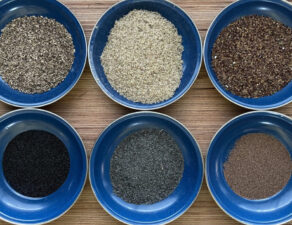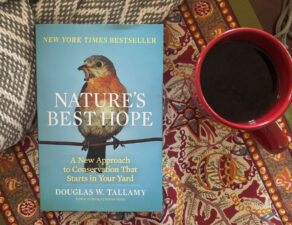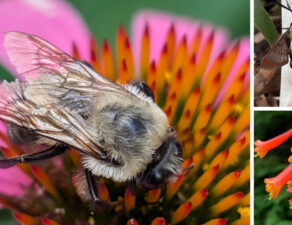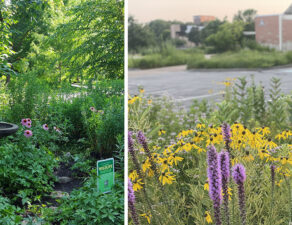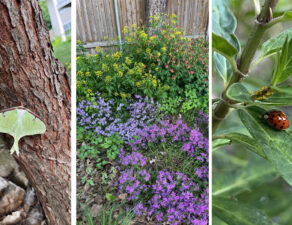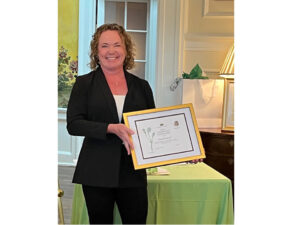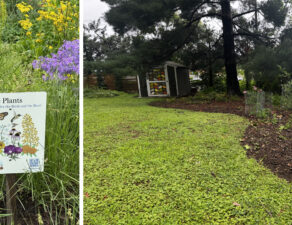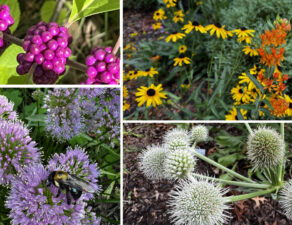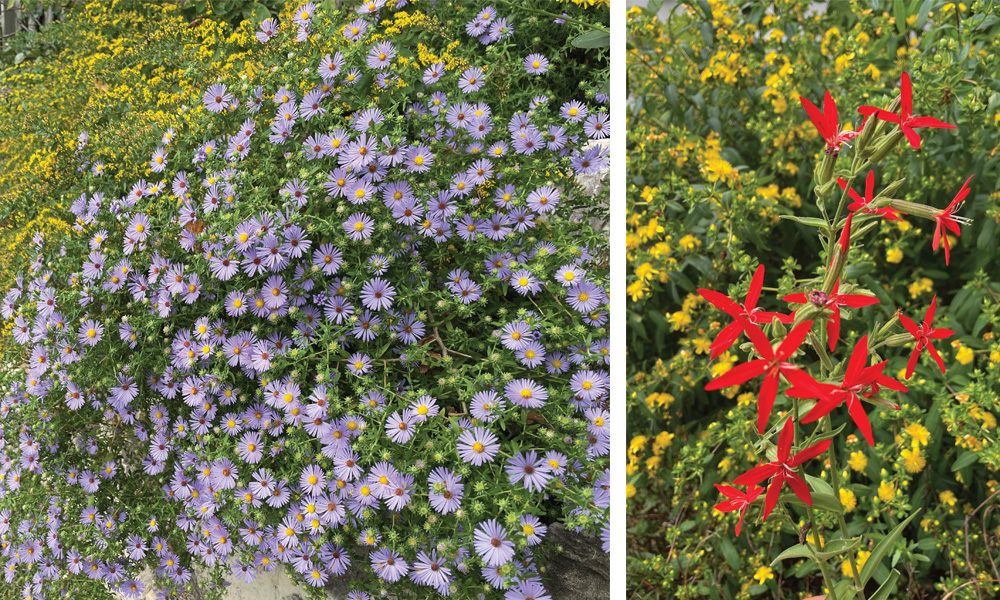
By Chris Cardwell
Photos: Aromatic Aster (left), Royal Catchfly (right). Photo credit: Cydney Ross
What Should You Plant Now For Fall Migration Support?
Spring has sprung, but our work isn’t done. It is time to begin planting to promote health for pollinating insects and hummingbirds for their long journeys South during fall migration. Pollinators need high quality nectar and pollen sources in order to complete their journey. Migratory pollinators need what the National Park Service calls, “nectar trails”, consisting of irregular patches of flowering plants that guarantee stopovers and ‘refueling sites’ to continue their journey. Our beloved Monarch butterfly, hummingbirds, and several bat species migrate south every fall. They can travel thousands of miles and like us humans, they need a high-quality source of energy to make the trip.
We offer these plant recommendations for you to incorporate into your native plant gardens to promote pollinator health and create nectar trails: Liatris aspera (Rough Blazing star), Salvia azurea (Blue or Pitcher Sage), Silene regia (Royal Catchfly), Symphyotrichum oblongifolium (Aromatic Aster), and Solidago speciosa (Showy Goldenrod). These plants, when incorporated into pollinator gardens, will have a lasting impact on our migratory pollinators. Their most important feature for wildlife is their fall bloom time, but an added bonus for us is their stunning blooms!
Pitcher sage has a vibrant blue flower that will support Monarchs and hummingbirds, but it is also the only food source for a threatened native specialist, the Blue Sage Bee. Royal Catchfly is another plant that will keep those migratory hummingbirds happy and healthy, and its brilliant red blooms are sure to be not only a fly catcher but also an eye catcher! And Goldenrods, Asters and Blazing Stars of all varieties are the prolific nectar producers which are crucial for the survival of the “Marathon Monarch” generation – those who return all the way to their Mexican overwintering grounds and turn around to come back North and begin the miraculous cycle of their lives the following Spring – a journey of up to 3000 miles. Milkweeds may make Monarch babies, but without these fall stunners in our Kansas City landscapes, the parents of next year’s generations will struggle.
